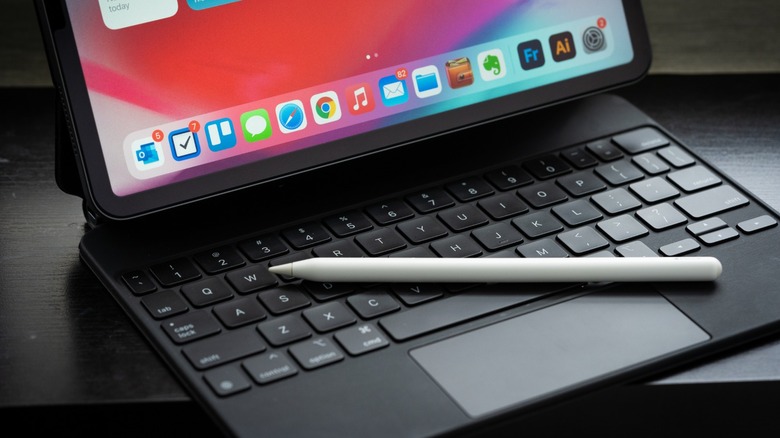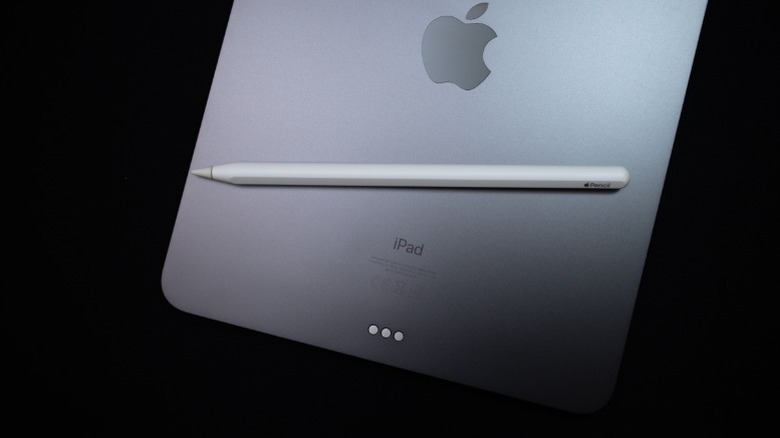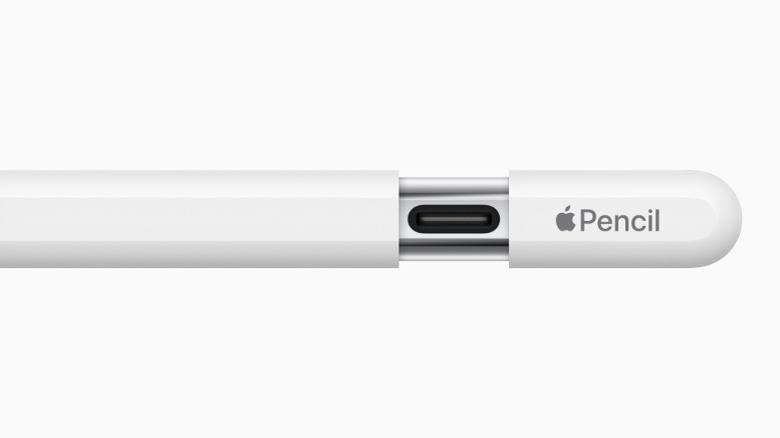Apple Pencil (2 Gen) Vs. Apple Pencil USB-C: What's The Difference?
Launched alongside the iPad Pro, the first generation Apple Pencil allowed the company to market its tablet to new audiences — specifically artists and graphic designers. We've since seen several iterations of the Apple Pencil, but unlike most products in Apple's arsenal, picking the right stylus to go along with your iPad can get confusing.
Modern iPads are compatible with the costlier Apple Pencil Pro and the comparatively cheaper USB-C Apple Pencil. However, Apple still sells its older first and second generation Pencils to ensure that the customers who have older iPad models aren't without any options. The 2nd Generation Apple Pencil was released a while back in 2018, compared the newer USB-C Apple Pencil that was launched in 2023 that extends support to both newer and a few older iPad models.
This is not to say that the USB-C Apple Pencil is an upgraded version — quite the contrary, actually. It retails at $79 compared to the 2nd Generation Apple Pencil that costs $129. There is a notable disparity in features between these models, but the first big difference to account for when eyeing the USB-C or 2nd Generation Apple Pencil is the stylus' compatibility across the iPad lineup.
Which Apple Pencil is compatible with your iPad?
According to Apple's official documentation, the Apple Pencil (2nd Generation) is compatible with the following iPad models:
- iPad Pro 12.9-inch: 3rd, 4th, 5th, and 6th generations
- iPad Pro 11-inch: 1st, 2nd, 3rd, and 4th generations
- iPad Air: 4th and 5th generations
- iPad mini: 6th generation
The USB-C version of the Apple Pencil is also compatible with all the devices listed above, in addition to these iPad models:
- iPad Pro 13-inch: M4
- iPad Pro 11-inch: M4
- iPad Air 13-inch: M2 and M3
- iPad Air 11-inch: M2 and M3
- iPad: A16 and 10th generation
- iPad mini: A17 Pro
Based on the compatibility list, it's clear that the more modern iteration of the Apple Pencil serves to a wider range of iPads. Given how identical Apple products can get, it might be easier to find your iPad's model through the Settings app by navigating to General > About. A good thing regardless of which Apple Pencil you go for is the fact that you don't have to carry around the older Lightning cable, since all iPads on this list charge via USB-C.
What about features and connectivity?
The 2nd Generation Apple Pencil doesn't have a lightning or USB-C port to charge. Instead, it magnetically snaps on to the side of your iPad and juices up wirelessly. This is notably more convenient compared to the USB-C Apple Pencil that needs a wired USB-C connection to charge. Fortunately, it can still snap on to your iPad, which sends it into a power saving mode.
Both Apple Pencils deliver "pixel-perfect precision," claims Apple. In other words, either model should be just as good when it comes to sketching, writing, or painting on the iPad. You also get hover functionality with both models, which is a feature that lets you quickly explore the tool palette on select iPad models. Unfortunately, the USB-C model skimps out on the double-tap gesture that lets you switch between tools on the fly.
Likely as a cost-cutting measure, the USB-C Apple Pencil also doesn't feature pressure sensitivity — which can be a dealbreaker to some, especially to digital artists that are used to dynamic brush strokes. It does have tilt sensitivity, which can come in handy for shading and other effects. Overall, you are making some notable sacrifices going with the USB-C Apple Pencil. However, if you don't mind the lack of pressure sensitivity, the double-tap gesture, and wireless charging, it ties in well to the ecosystem, something that other Apple Pencil alternatives might not excel at.


